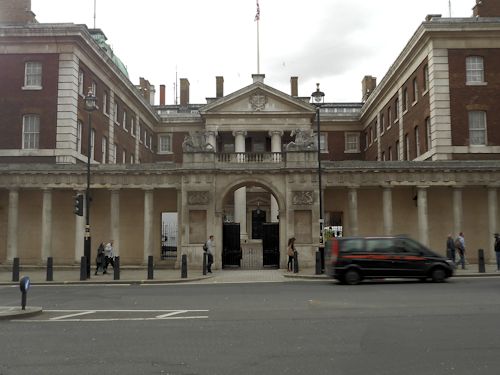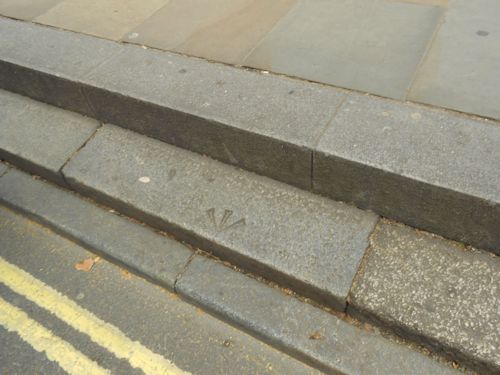The Shame of London
The Admiralty, home of the Royal Navy, was designed by Thomas Ripley in 1726, it was the first Government building designed for a specific purpose. It is where some of the greatest naval battles like the Battle of Trafalgar were planned. The body of Lord Nelson spent its final hours resting here before the funeral procession to St Paul’s Cathedral. But even with all these glories, for the first fifty years, the Admiralty buildings was known as the ‘shame of London.’ Every guide-book of London written before 1820 called the building ‘a disgrace to London.’ But why was this building made into such a laughingstock and why did they want to hide it behind a screen wall designed by Robert Adam in 1761?
If you take a close look at the Admiralty building you may notice that the iconic columns are taller than you would expect them to be. When Ripley designed the Admiralty the columns were the right height for the building, but this meant the triangle over the columns would be level with the top storey. The Admiralty was not happy with this as the columns would block out sunlight and cost more for oil lamps, so Ripley was told to make his columns taller. Ripley, understanding the correct height of classical columns protested, but he was overruled by the naval officials and had no choice other than to comply with their wishes. The Admiralty, once it had learned its mistake, could not demolish the building – the only thing left was to cover it up!
One guide-book published in 1806 said: ‘Never were such strange pillars seen. No building in London ever suffered from such a strange frontage as this.’
Aberdeen Granite
Sir Henry’s trademark arrowheads carved onto the stone
While outside the Shame of London in Whitehall, if you look down on the kerbstone you might wonder what are the arrow markings are for!
In 1762 the Westminster Paving Bill was tabled in the House of Commons. It was agreed on something needed to be done to protect pedestrians from the horse-drawn traffic. It was agreed that pavements needed to be built, but who should pay the bill? It was decided that the houses and buildings in the streets should be liable to fund these new pedestrian walkways. The first street in London to have a dedicated pavement was Craig’s Court in Whitehall. Like everyone else, the Admiralty also needed a pavement outside to protect the public, so to save public money; they decided that if kerbstones should be bought they should be the most cost-effective and long-lasting. Sir Henry Sidney had already thought of the idea of putting distinctive arrowhead (his family crest) markings on all government equipment. Aberdeen granite was reckoned to be the strongest, so a government agent was sent to their quarry in Scotland. Because of the time, it would take before they came to Whitehall, months rather than weeks, making sure the Admiralty got the granite which they paid for, Sir Henry’s trademark arrowheads were carved onto the stone. Today, over two-hundred and fifty-year later, these very long-lasting Aberdeen granite kerbstones are still outside the Admiralty building, separating the pavement from the road.
London Time

Follow Us
The contents of this website are the property of knowledgeoflondon.com and therefore must not be reproduced without permission. Every effort is made to ensure the details contained on this website are correct, however, we cannot accept responsibility for errors and omissions.
© Copyright 2004 -
Contact Us | Advertise